

The 5 Highest Paying Programming Languages in 2024: A Comprehensive Guide

As Seen On
In the dynamic realm of technology, the quest for the highest-paying programming languages is akin to a modern-day gold rush. With the landscape of software development constantly evolving, certain programming languages have emerged as the frontrunners in the race towards lucrative career opportunities.
This article delves into the top 5 programming languages that command the highest salaries in 2024, offering insights, anecdotes, and a glimpse into the future of coding.
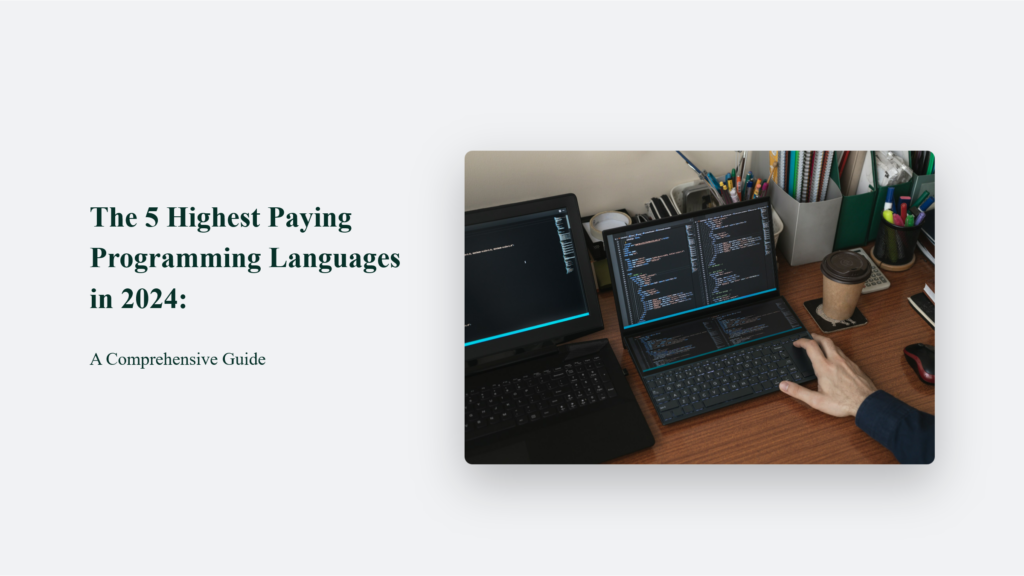
Key Takeaway: A Diverse Landscape of Opportunity
This exploration reveals a diverse technological landscape where different languages offer unique advantages and challenges. From Solidity’s dominance in the blockchain sphere to Rust’s memory safety prowess and Erlang’s concurrency capabilities, the variety of high-paying opportunities reflects the wide-ranging needs of the industry.
5 Highest Paying Programming Languages in 2024:
Solidity – The Blockchain Behemoth
Average Salary: ~$188,000/year
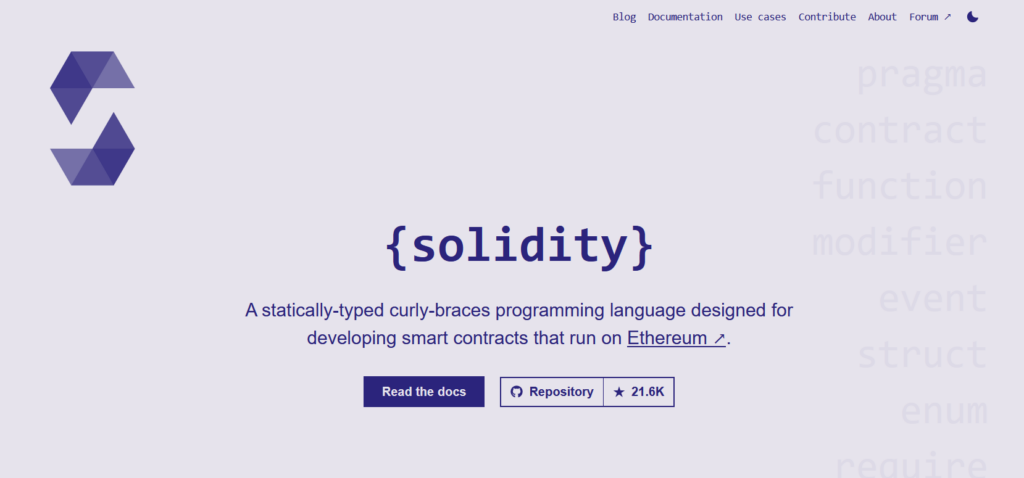
As the premier programming language for developing smart contracts on the Ethereum blockchain and other platforms, Solidity has positioned itself at the forefront of the blockchain and Web3 revolution. Its significance is underscored by its foundational role in the creation and execution of smart contracts, which are pivotal for the functionality of decentralized applications (dApps), decentralized finance (DeFi) solutions, and various other blockchain-based innovations.
The burgeoning demand for Solidity developers directly reflects the explosive growth in the blockchain sector, particularly in DeFi, non-fungible tokens (NFTs), and the broader Web3 ecosystem. This demand is further amplified by the relatively limited pool of developers with the requisite expertise in Solidity compared to more traditional programming languages.
As a result, organizations are willing to offer substantial compensation to attract top talent in this niche, with salaries for experienced Solidity developers reaching remarkable highs.
The salary range for Solidity developers varies widely, influenced by factors such as experience, location, and the complexity of projects they are involved in.
On average, salaries hover around $188,000 per year, but for those at the top of their field, compensation can surge to $750,000 or more. This wide range underscores both the high demand for and the scarcity of skilled Solidity developers capable of navigating the intricacies of blockchain technology and implementing effective, secure smart contracts.
The lucrative salaries are a testament to the value placed on Solidity expertise within the tech industry, highlighting these professionals’ critical role in developing and deploying blockchain technologies.
As the blockchain sector continues to evolve and expand, the demand for skilled Solidity developers is expected to grow, further cementing its status as one of the highest paying programming languages in the tech industry.
For those interested in pursuing a career in blockchain development, mastering Solidity offers a pathway to significant professional opportunities and financial rewards. With the continuous growth of the blockchain industry, the importance of Solidity is likely to increase, making it a strategic skill for developers looking to specialize in cutting-edge technology areas.
Rust – The Safety-First Sentinel
Average Salary: ~$156,000/year

Rust, often hailed as “The Safety-First Sentinel,” has rapidly become one of the most sought-after programming languages, especially in system-level programming. Its unique proposition lies in offering speed and safety—attributes that seldom coexist in low-level programming languages. What sets Rust apart is its uncompromising stance on memory safety features and concurrency management without sacrificing performance.
The language’s design prioritizes preventing segfaults, and it achieves this through its ownership system, which ensures memory safety at compile time. It eliminates a whole class of bugs common in other systems programming languages like C or C++. Rust’s approach to concurrency is innovative and practical, allowing developers to write efficient and inherently safe code from data races and other concurrency-related bugs.
Rust’s relevance has been magnified with its adoption in Web3 and blockchain projects, sectors known for their stringent requirements for both security and performance. Blockchain technology, in particular, demands a level of reliability and efficiency that Rust is uniquely positioned to provide. Its ability to ensure memory safety and manage state across concurrent operations makes it an ideal choice for developing blockchain applications, where the integrity and performance of the system are paramount.
The financial rewards for Rust developers reflect the language’s critical role in these cutting-edge fields. With an average salary of approximately $156,000 per year, Rust developers are among the highest-paid in the industry. Moreover, the top tier of Rust developers can command salaries upwards of $500,000, highlighting the premium placed on this expertise in the job market. This surge in compensation is not just a testament to the language’s current popularity but also an indicator of its pivotal role in shaping the future of software development.
Rust’s journey from a systems programming language to a cornerstone of modern, high-performance applications underscores a broader shift in the industry towards prioritizing safety and efficiency. As we continue to push the boundaries of what’s possible with technology, languages like Rust that can deliver on these fronts while adapting to the evolving needs of developers and industries are poised to lead the way.
The information provided here draws on multiple sources, including developer surveys, job market analytics, and insights from industry experts, to paint a comprehensive picture of Rust’s standing in the programming world. Its ascendancy signals the growing recognition of the need for safer, more reliable programming practices to develop tomorrow’s technological solutions.
Erlang – The Concurrency Champion
Average Salary: $103,000/year
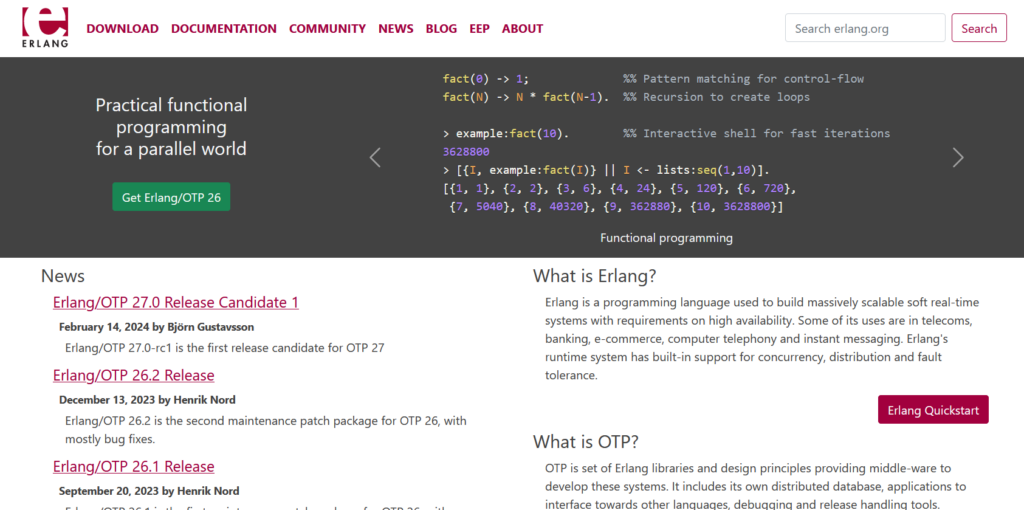
Erlang is the concurrency champion among programming languages, boasting an average salary of $103,000/year. Engineered for crafting concurrent, distributed, and fault-tolerant systems, Erlang has carved out a niche in the software development world. Its design philosophy caters to the requirements of large-scale, real-time applications, making it an invaluable asset in sectors such as telecommunications and high-speed trading.
Despite its specialized capabilities, Erlang elicits mixed reactions from developers, particularly concerning its syntax and usability. However, its proficiency in managing complex, concurrent processes without compromising performance ensures its position as one of the highest paying programming languages in the industry. The language’s unique attributes, such as its lightweight processes and built-in support for concurrency, have solidified its role in developing systems that require high reliability and uptime.
Erlang’s contribution to developing robust, scalable applications cannot be understated. Its ability to handle numerous simultaneous connections makes it a go-to choice for applications where downtime is not an option. It makes Erlang not just a programming language but a testament to the evolving needs of the digital age, where efficiency, reliability, and concurrency are paramount.
Scala – The Functional Artisan
Average Salary: $92,780/year
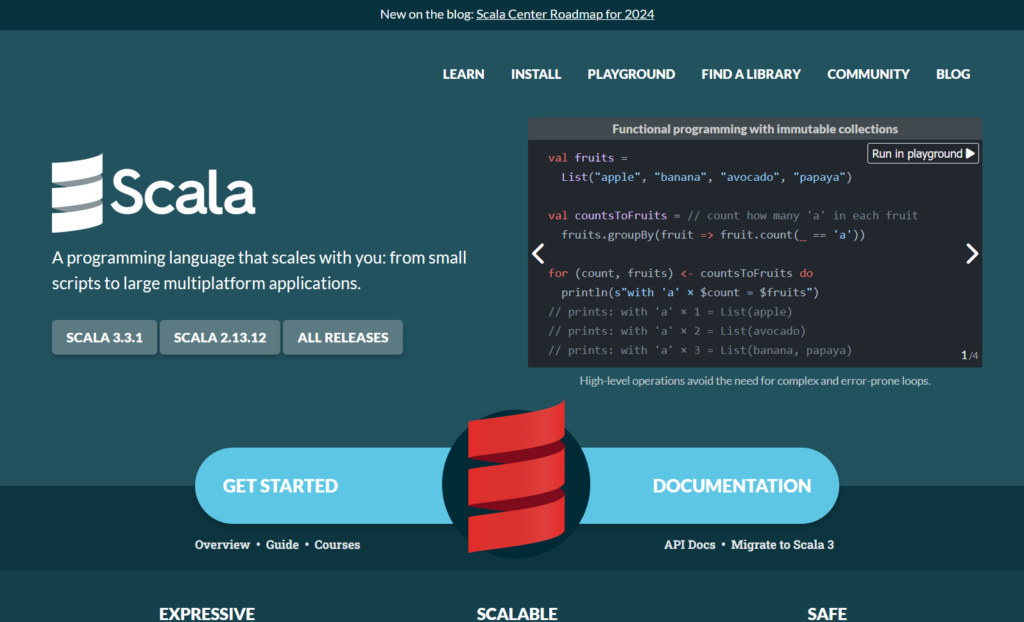
Scala, an elegant amalgam of object-oriented and functional programming paradigms, operates seamlessly on the Java Virtual Machine (JVM). Renowned for its concise syntax and robust capabilities, Scala facilitates various applications, from intricate web services to advanced big data analytics. This versatility positions Scala as a coveted skill in the technology sector, attracting many developer opportunities. With an average annual salary of $92,780, Scala professionals are among the top earners in the software development field.
Moreover, the upper echelons of Scala expertise can command salaries upwards of $200,000, reflecting the high demand and the critical role Scala plays in modern software development. This blend of functional and object-oriented programming enhances developer productivity. It enables the creation of scalable, maintainable, and robust software solutions, making Scala an invaluable asset in the developer’s toolkit.
Go – The Cloud Native
Average Salary: $89,204/year
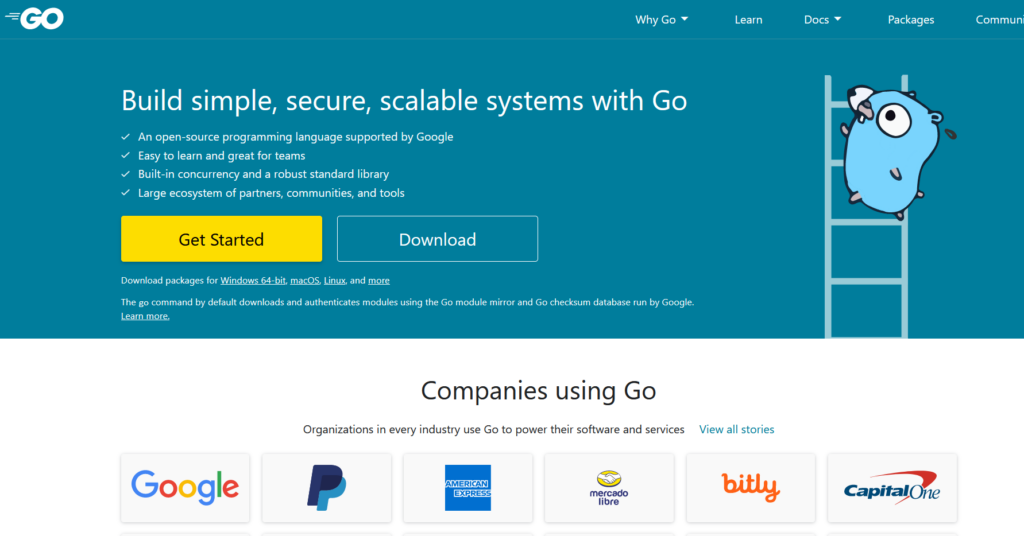
Go, also known as Golang, has established itself as a linchpin in the development of cloud services and distributed systems, thanks to its design by Google for simplicity, efficiency, and robust concurrent programming capabilities. Its straightforward syntax and powerful standard library make it ideal for building scalable, high-performance web servers and large-scale distributed systems. The programming language’s emphasis on simplicity and readability reduces the cognitive load on developers, enabling them to write, maintain, and scale complex applications more effectively.
Go’s growing popularity is reflected in the increasing demand for Go developers, particularly in industries where cloud-native technologies are at the forefront. This demand drives up salaries, with average annual earnings for Go developers around $89,204 and top earners commanding upwards of $160,000. The language’s strong ecosystem, including tools for dependency management (like Go Modules) and a comprehensive set of standard libraries, alongside its efficient compilation of machine code, ensures Go remains a top choice for companies investing in cloud infrastructure and microservices architectures.
For those looking to dive into cloud computing and distributed systems, mastering Go can open doors to exciting career opportunities in a sector that continues to evolve and expand.
Examples and Insights
- Blockchain and Web3: Solidity’s unparalleled demand underscores the industry’s rapid expansion and the scarcity of skilled developers in this niche.
- System Programming: Rust’s rise highlights the ongoing need for performance and safety in system-level software, particularly in areas like cryptocurrency and IoT.
- Concurrency and Distributed Systems: Erlang’s place in the list emphasizes the critical importance of concurrent processing in today’s software landscape.
The Bottom Line:
In conclusion, the landscape of high-paying programming languages is as varied as it is dynamic. Whether you’re drawn to the innovative frontiers of blockchain technology or the robust demands of system programming, the key to unlocking these lucrative opportunities lies in a combination of skill, curiosity, and continuous learning.
Konger
Up until working with Casey, we had only had poor to mediocre experiences outsourcing work to agencies. Casey & the team at CJ&CO are the exception to the rule.
Communication was beyond great, his understanding of our vision was phenomenal, and instead of needing babysitting like the other agencies we worked with, he was not only completely dependable but also gave us sound suggestions on how to get better results, at the risk of us not needing him for the initial job we requested (absolute gem).
This has truly been the first time we worked with someone outside of our business that quickly grasped our vision, and that I could completely forget about and would still deliver above expectations.
I honestly can't wait to work in many more projects together!
Disclaimer
*The information this blog provides is for general informational purposes only and is not intended as financial or professional advice. The information may not reflect current developments and may be changed or updated without notice. Any opinions expressed on this blog are the author’s own and do not necessarily reflect the views of the author’s employer or any other organization. You should not act or rely on any information contained in this blog without first seeking the advice of a professional. No representation or warranty, express or implied, is made as to the accuracy or completeness of the information contained in this blog. The author and affiliated parties assume no liability for any errors or omissions.

